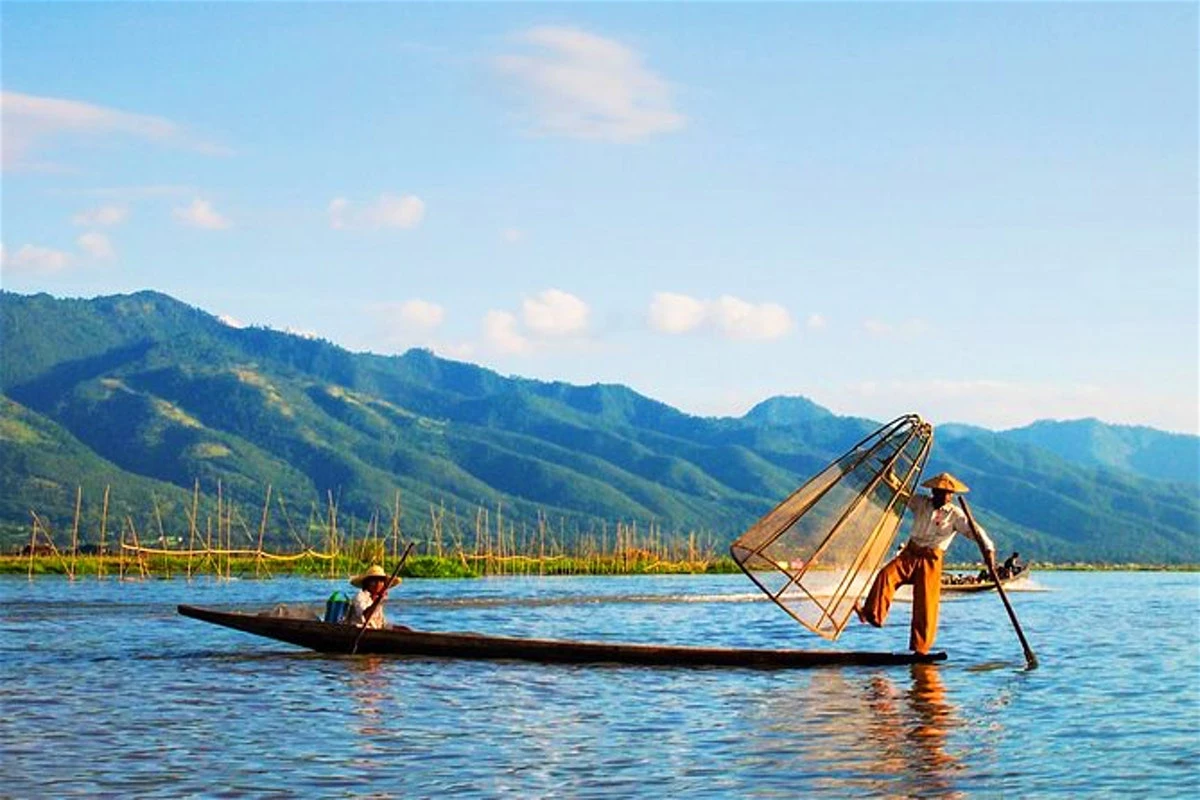
Myanmar
Region map
General information
The country of Myanmar is also known as Burma, and the two names are often confused. Both names, Myanmar and Burma, existed historically when kings and queens ruled the country. There is a misconception that British colonialism transformed the country’s name to Burma. However, the country had always been called “Burma” in English. The Burmese people referred to their own country as “bama” and “myanma.” Both names had been used throughout history, “Burma” being the more common name and “Myanmar” being a more formal title.
Myanmar is South East Asia’s largest continental country, covering around twice the size of Vietnam. Inside its border it contains both South East Asia’s highest peak, the Hkakabo Razi, part of the Himalayas and reaching a height of 5’881 meters, as well as some of Asia’s most pristine and untouched beaches. Around 135 different ethnic groups live inside the country, making it one of the most ethnically diverse countries in the world.
Adventure Asia offers a myriad of great adventure and excursion in Myanmar. You can cycle in Bagan, ballooning above Golden Eagle, experience local life by oxcart, enjoy an ancient Bagan city tour – Adventure Asia has it all.
Myanmar itineraries

Explore Bagan Temples and Villages by Bike
Get closer to a place of numerous national as well as ancient temples and pagodas, especially the golden one-Shwezigon through this Bagan 2 day itinerary. It is hard not to be hypnotized by the magical landscape as well as the intricate architecture. Bike cross country through small dirt tracks and walkways. During these 2 days in Bagan, experience the Burmese culture through the Nyaung U market, then discover the surrounding villages. Discover the main places and pagodas around Bagan.
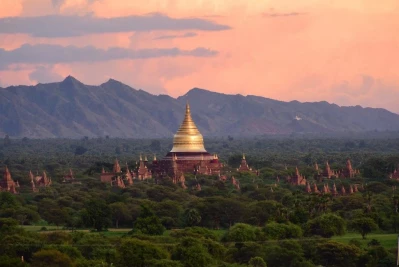
Bagan Full Day Biking tour
Pedal past hundreds of stupas on a bike tour through the city of Bagan. Cycle approximately 22 to 25 miles (35 to 40 Kilometers) around the city and visits a myriad of important temples and pagodas including Shwezigon Pagoda, Gubyaukgyi Temple, and Ananda temple. Enjoy a delicious lunch at a local restaurant at your expense and admire the beautiful sunset at the Bupaya Pagoda by the Irrawaddy River. This Bagan biking tour is one you shouldn't miss!
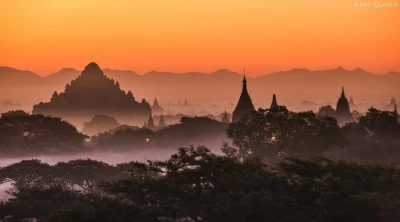
Half Day Adventure Bagan Bike Tour
Leave the crowd behind on a half-day bicycle tour of Bagan's ancient temples, traditional communities, and countryside that includes lunch at a local restaurant. Follow a local guide to a morning market, tour a 150-year old wooden monastery, then visit a few highlights of the Bagan Archeological site. Each lunch at a restaurant that is a training school for disadvantaged youth, and learns about a community-focused NGO before returning to Bagan.
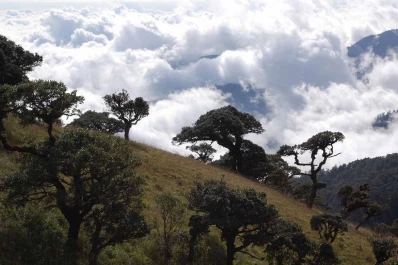
Mt.Victoria And Chin Discovery
Mt. Victoria and the Chin discovery trekking trip are a combination of cultural sightseeing in old Chin villages and trekking to Mt. Victoria, which lies in a Natmataung national park in Southern Chin State. This tour is designed for all travelers who want to visit Chin villages by trekking or not. A visit to the Chin villages will send you back one century ago. We do recommend this trip for travelers who want to make an easy trekking adventure tour to hill tribal villages. Trekking and walking among the beautiful forest mount, enjoy the nature of wildlife, observe the way of life of mountain people and the beauty of their tattooed faces will be the main attraction of this tour.
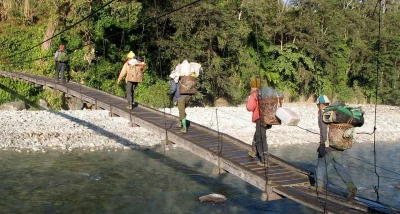
Family Trek Around Mindat
A scenic trek to the valleys and villages around Mindat. Never too far away from the road, this is an easy tour option to enjoy the beauty of Chin state and the traditional villages together with your family. Short walking distances daily and was one of the group gets tired, we can also arrange a motorbike to transfer to the next village. Think scenic villages, friendly locals who will welcome you into their villages along the way. Your children will find plenty of young play mated from the villages, eager to play and explore with them.
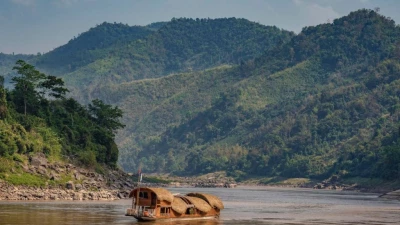
Full Day Sighseeing Tour With Boat Trip To Kyaukgu Umin
Explore the ancient archaeological site of Bagan and learn about the area’s history during this full-day sightseeing tour. Visit the Payathonzu Pagoda, a complex of three connected shrines, the Tayok Pye Pagoda in the Minnanthu village, and take a boat ride to Kyaukgu Umin to see the temple built into a cliff. End tour with a boat rides back to Bagan just as the sun is setting over the horizon.

Trekking Chin State’s Mt. Victoria
Travel where a few have traveled before and hike the highest peaks in the Chin State of Western Myanmar. Our 6-day Mt. Victoria trekking itinerary will show you the incredible beauty of Myanmar’s countryside. Learn about an entirely different way of life as you travel between villages on foot and by jeep. Visit the locals and feel completely at home as you spend the night in their welcoming households and eat at their incredible handcrafted stone tables.
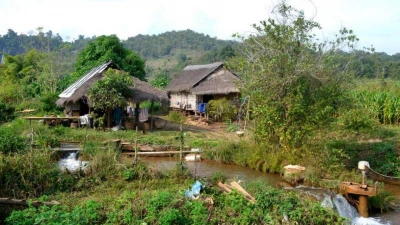
Hsipaw Trekking Tour
Although the town itself is a very charming place, Hsipaw is still mainly a starting point for treks to the surrounding areas. There are different length treks available and during treks, the lodging takes place at local houses or monasteries with shared facilities. You also have the opportunity to rent a bike, take a boat trip on the river, explore Shan Chietains Saobwa’s residence and history or explore the hot springs and waterfalls of the area.
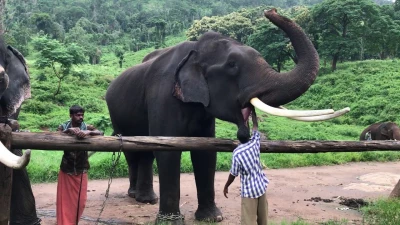
Kalaw Eco Elephant Camp Trek
Our trek starts from Kalaw, where you will meet your trekking guide. Hike forest trails through bamboo groves and teak forests in the lush green forested valley, where the Green Hill Valley camp is situated. Green Hill Valley elephant camp offers several ecotourism activities, where the residents happily share knowledge about nature conservation. Here, you can also meet the Mahouts- elephant caretakers, bathe with the elephants, take an elephant ride and participate in tree re-planting. Green Hill Valley is a nature conservation project where they plant new trees and give the elephants a new home in their natural habitat. They give old working elephants a place to retire and younger elephants a chance to live a happy life in a safe environment.
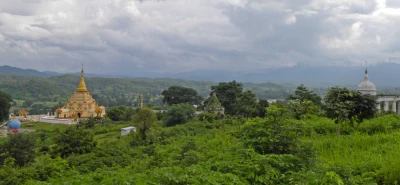
Lashio Trekking Adventure
Located in North Eastern Shan State, Lashio is a truly off the beaten path destination deserving to explore. The countryside surrounding Lashio is abundant with hidden natural beauty. During your adventure, you will trek through verdant prime forests, Paddleboard on a tranquil lake, explore fascinating limestone caves and swim under the jaw-dropping waterfalls. You will also have the chance to observe and learn about the areas of diverse ethnic tribes with visits to several minority villages in the Lashio region as well as an overnight stay at Shan and Laho villages.
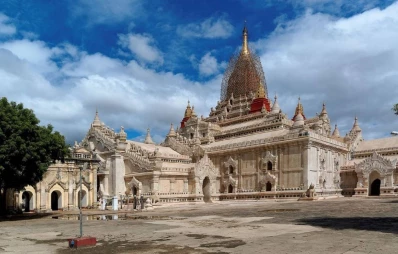
Golden Triangle Three Countries
You will get complete touring experience, from historical significance to cultural insights and wilderness highlights during these 15 days of the extended Golden Triangle tour. This tour is highly recommended for those travelers who are looking to explore everything from culture, nature, wildlife, heritage, and history of Southeast Asia at a go.
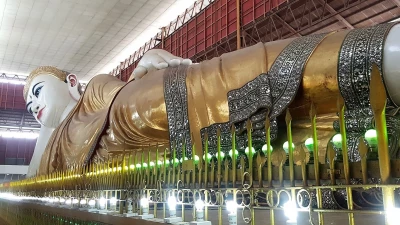
Heritage Journey Of Myanmar and Vietnam
Explore Myanmar and Vietnam on an in-depth journey that takes you from Yangon to Hanoi or vice versa. This Heritage journey combines the two countries in Southeast Asia, aiming to provide you an experience of the history, culture, people, and traditions that have evolved over the years in these two magnificent countries. It will undoubtedly be a fantastic, once in a lifetime journey and comes with our careful selection from thousands of wondrous limestone karsts of Halong Bay.
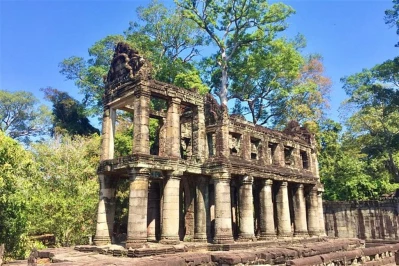
Myanmar – Cambodia, Two Wonders of Southeast Asia
Angkor in Cambodia and Bagan in Myanmar are famous wonders in Southeast Asia. Both of them are keeping great historical values. With this tour, you will discover awe-inspiring Angkor temples in Cambodia and visit the awesome places in Myanmar with pagodas in Yangon, the ancient temples in Bagan, cruise on the magical Inle Lake or the cultural center of Mandalay.

Explore Bagan Temples and Villages by Bike
Get closer to a place of numerous national as well as ancient temples and pagodas, especially the golden one-Shwezigon through this Bagan 2 day itinerary. It is hard not to be hypnotized by the magical landscape as well as the intricate architecture. Bike cross country through small dirt tracks and walkways. During these 2 days in Bagan, experience the Burmese culture through the Nyaung U market, then discover the surrounding villages. Discover the main places and pagodas around Bagan.

Bagan Full Day Biking tour
Pedal past hundreds of stupas on a bike tour through the city of Bagan. Cycle approximately 22 to 25 miles (35 to 40 Kilometers) around the city and visits a myriad of important temples and pagodas including Shwezigon Pagoda, Gubyaukgyi Temple, and Ananda temple. Enjoy a delicious lunch at a local restaurant at your expense and admire the beautiful sunset at the Bupaya Pagoda by the Irrawaddy River. This Bagan biking tour is one you shouldn't miss!

Half Day Adventure Bagan Bike Tour
Leave the crowd behind on a half-day bicycle tour of Bagan's ancient temples, traditional communities, and countryside that includes lunch at a local restaurant. Follow a local guide to a morning market, tour a 150-year old wooden monastery, then visit a few highlights of the Bagan Archeological site. Each lunch at a restaurant that is a training school for disadvantaged youth, and learns about a community-focused NGO before returning to Bagan.

Mt.Victoria And Chin Discovery
Mt. Victoria and the Chin discovery trekking trip are a combination of cultural sightseeing in old Chin villages and trekking to Mt. Victoria, which lies in a Natmataung national park in Southern Chin State. This tour is designed for all travelers who want to visit Chin villages by trekking or not. A visit to the Chin villages will send you back one century ago. We do recommend this trip for travelers who want to make an easy trekking adventure tour to hill tribal villages. Trekking and walking among the beautiful forest mount, enjoy the nature of wildlife, observe the way of life of mountain people and the beauty of their tattooed faces will be the main attraction of this tour.

Family Trek Around Mindat
A scenic trek to the valleys and villages around Mindat. Never too far away from the road, this is an easy tour option to enjoy the beauty of Chin state and the traditional villages together with your family. Short walking distances daily and was one of the group gets tired, we can also arrange a motorbike to transfer to the next village. Think scenic villages, friendly locals who will welcome you into their villages along the way. Your children will find plenty of young play mated from the villages, eager to play and explore with them.

Full Day Sighseeing Tour With Boat Trip To Kyaukgu Umin
Explore the ancient archaeological site of Bagan and learn about the area’s history during this full-day sightseeing tour. Visit the Payathonzu Pagoda, a complex of three connected shrines, the Tayok Pye Pagoda in the Minnanthu village, and take a boat ride to Kyaukgu Umin to see the temple built into a cliff. End tour with a boat rides back to Bagan just as the sun is setting over the horizon.

Trekking Chin State’s Mt. Victoria
Travel where a few have traveled before and hike the highest peaks in the Chin State of Western Myanmar. Our 6-day Mt. Victoria trekking itinerary will show you the incredible beauty of Myanmar’s countryside. Learn about an entirely different way of life as you travel between villages on foot and by jeep. Visit the locals and feel completely at home as you spend the night in their welcoming households and eat at their incredible handcrafted stone tables.

Hsipaw Trekking Tour
Although the town itself is a very charming place, Hsipaw is still mainly a starting point for treks to the surrounding areas. There are different length treks available and during treks, the lodging takes place at local houses or monasteries with shared facilities. You also have the opportunity to rent a bike, take a boat trip on the river, explore Shan Chietains Saobwa’s residence and history or explore the hot springs and waterfalls of the area.

Kalaw Eco Elephant Camp Trek
Our trek starts from Kalaw, where you will meet your trekking guide. Hike forest trails through bamboo groves and teak forests in the lush green forested valley, where the Green Hill Valley camp is situated. Green Hill Valley elephant camp offers several ecotourism activities, where the residents happily share knowledge about nature conservation. Here, you can also meet the Mahouts- elephant caretakers, bathe with the elephants, take an elephant ride and participate in tree re-planting. Green Hill Valley is a nature conservation project where they plant new trees and give the elephants a new home in their natural habitat. They give old working elephants a place to retire and younger elephants a chance to live a happy life in a safe environment.

Lashio Trekking Adventure
Located in North Eastern Shan State, Lashio is a truly off the beaten path destination deserving to explore. The countryside surrounding Lashio is abundant with hidden natural beauty. During your adventure, you will trek through verdant prime forests, Paddleboard on a tranquil lake, explore fascinating limestone caves and swim under the jaw-dropping waterfalls. You will also have the chance to observe and learn about the areas of diverse ethnic tribes with visits to several minority villages in the Lashio region as well as an overnight stay at Shan and Laho villages.
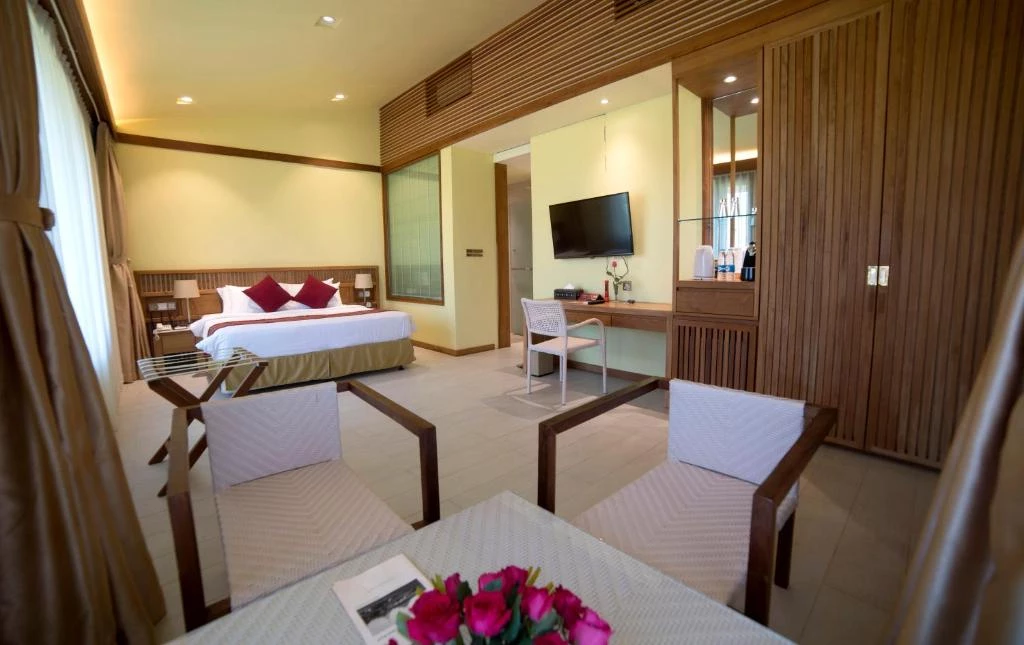
Bagan Thiripyitsaya Sanctuary Resort
Bagan Thiripyistaya Sanctuary Resort is situated on the banks of the Irrawaddy, Myanmar's river of history and legend. The Resort sprawls over 24 acres of landscaped gardens, which is home to mature tropical trees and flowering plants, as well as native birds and a number of small tame animals. Every morning our gorgeous peacocks, Myanmar's national bird, go for a walk in our garden. Oriented towards the west, the Resort revels in panoramic river views, glorious sunsets and silver moonglow, and a pervading atmosphere of profound peace, warmth and comfort.
Bagan Thiripyitsaya Sanctuary Resort
Bagan Thiripyistaya Sanctuary Resort is situated on the banks of the Irrawaddy, Myanmar's river of history and legend. The Resort sprawls over 24 acres of landscaped gardens, which is home to mature tropical trees and flowering plants, as well as native birds and a number of small tame animals. Every morning our gorgeous peacocks, Myanmar's national bird, go for a walk in our garden. Oriented towards the west, the Resort revels in panoramic river views, glorious sunsets and silver moonglow, and a pervading atmosphere of profound peace, warmth and comfort.
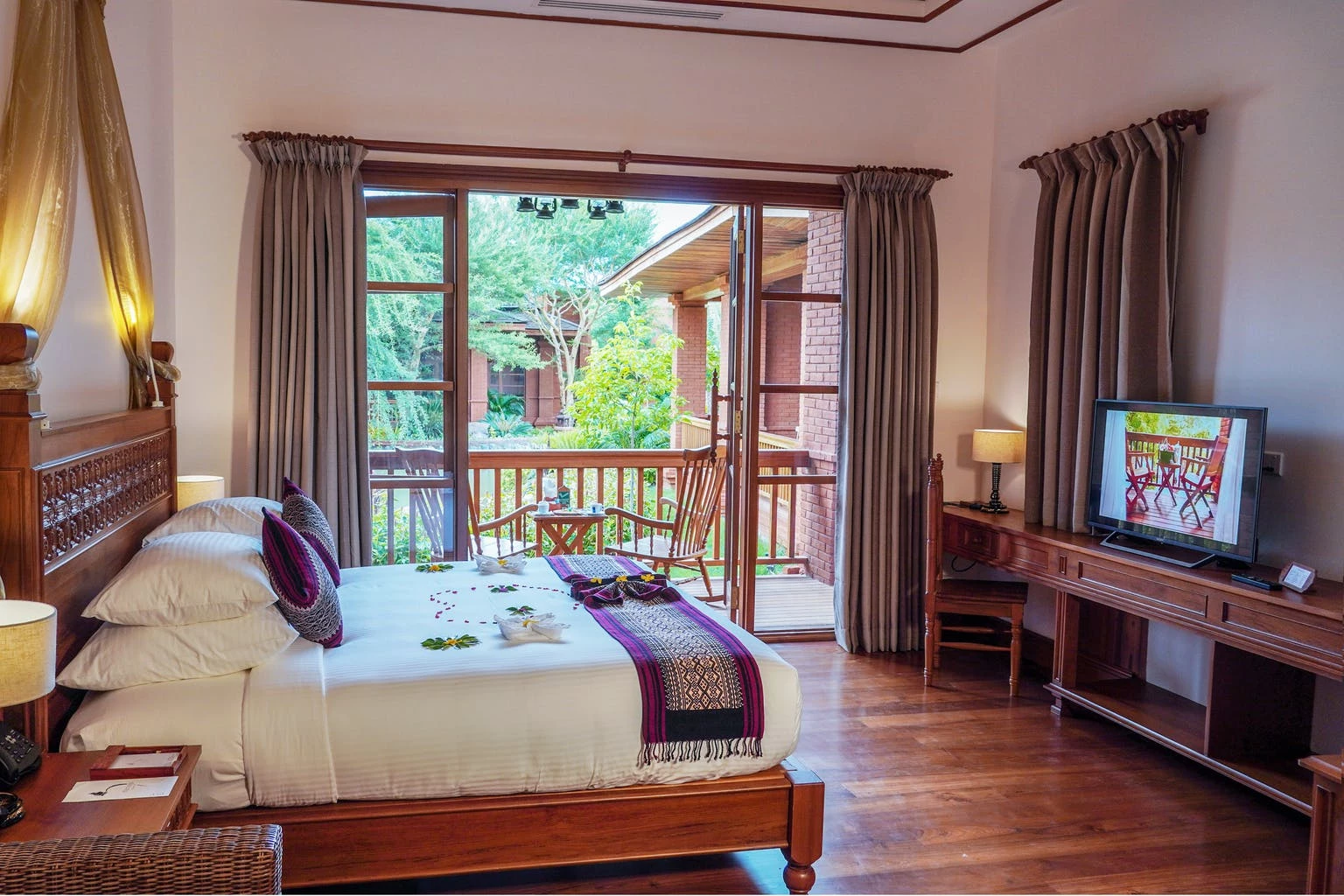
Heritage Bagan Hotel
The Heritage Bagan Hotel heralds a new dynasty as they invite guests into their warm embrace and serve with a passionate heart and gracious hospitality. The sprawling hotel is made up of 12 buildings styled after the ancient Buddhist temples that litter the ancient Bagan city and each building symbolizes the 12 Dynasties of Myanmar.
Heritage Bagan Hotel
The Heritage Bagan Hotel heralds a new dynasty as they invite guests into their warm embrace and serve with a passionate heart and gracious hospitality. The sprawling hotel is made up of 12 buildings styled after the ancient Buddhist temples that litter the ancient Bagan city and each building symbolizes the 12 Dynasties of Myanmar.

Aureum Palace Hotel - Bagan
In ancient times, the kingdom of Bagan surrounded the myth of being a bridge between heaven and earth. Set within the Bagan Archaeological Preservation Zone, in a unique location amongst the ancient temples, the Aureum Palace Hotel & Resort, Bagan is an expansive resort set amidst 27 acres of tropical landscaped gardens, offering the ultimate in relaxation for guests seeking a unique journey into the history of ancient Bagan. Antiques, artifacts and local arts uniquely adorn each villa, complementing the majestic ambiance of the resort and its surroundings.


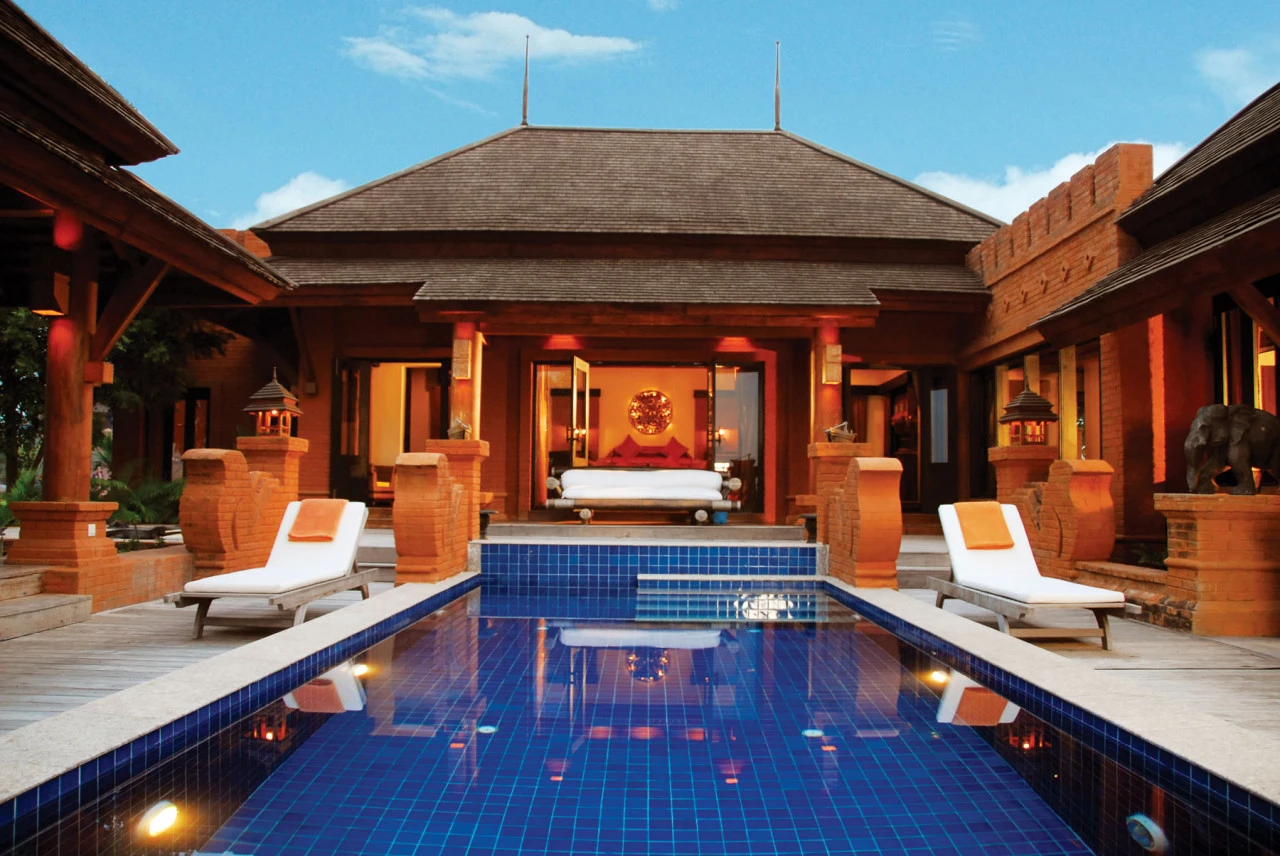
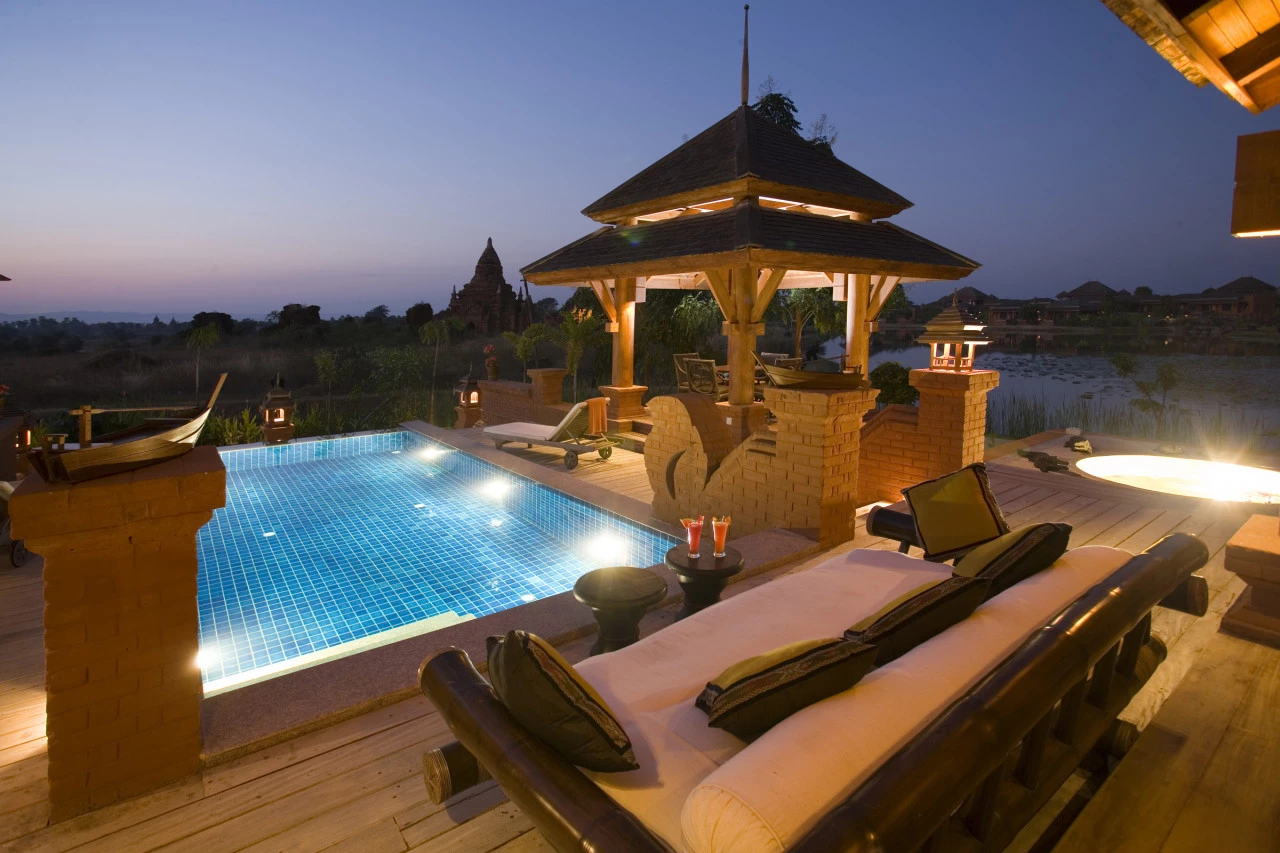
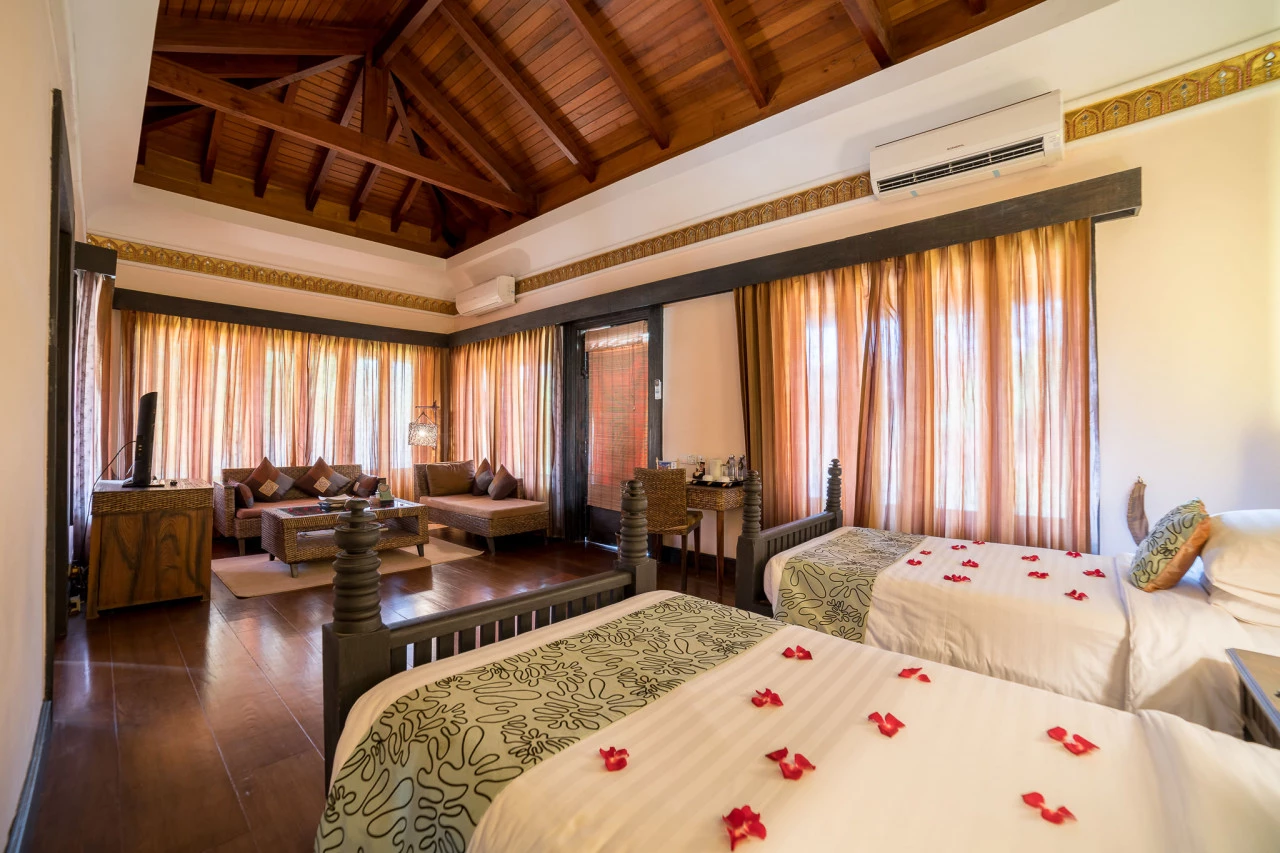

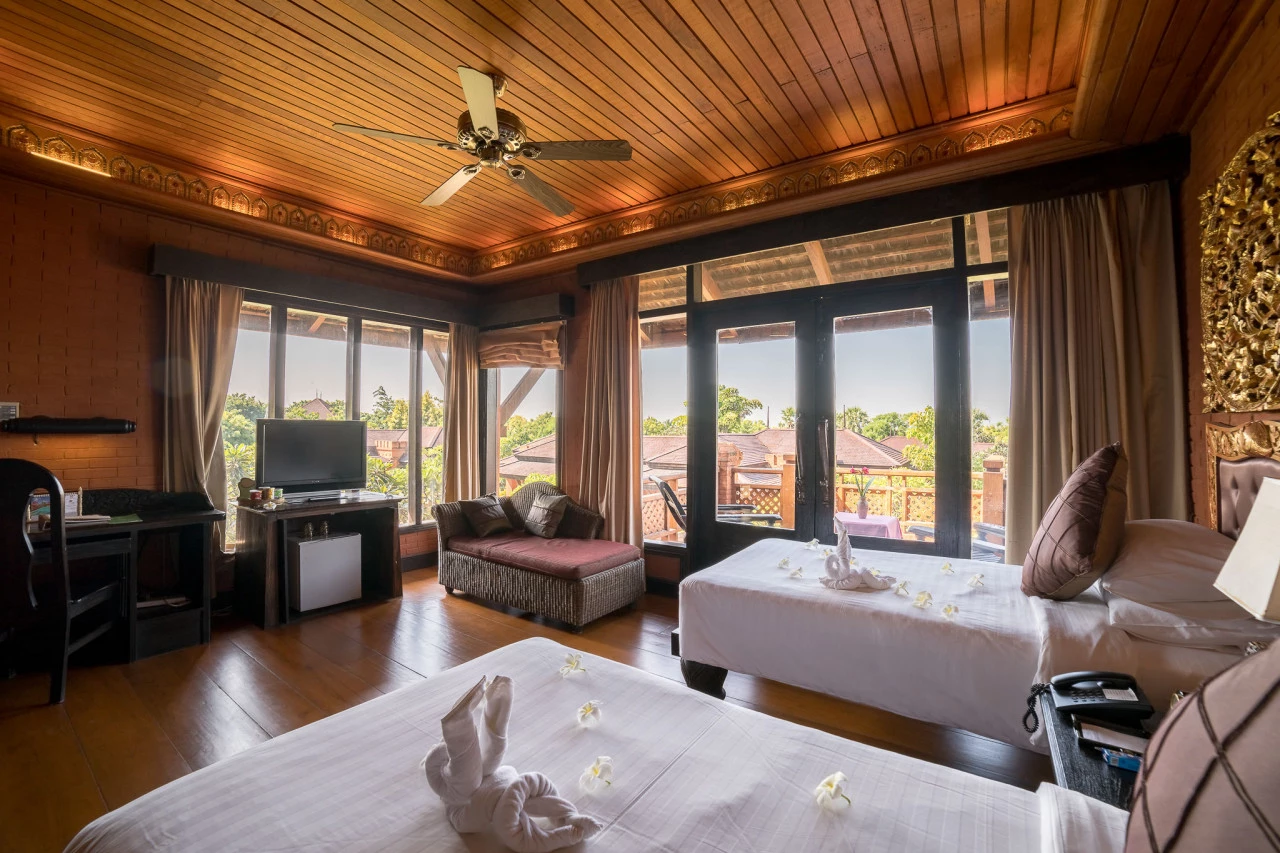
Aureum Palace Hotel - Bagan
In ancient times, the kingdom of Bagan surrounded the myth of being a bridge between heaven and earth. Set within the Bagan Archaeological Preservation Zone, in a unique location amongst the ancient temples, the Aureum Palace Hotel & Resort, Bagan is an expansive resort set amidst 27 acres of tropical landscaped gardens, offering the ultimate in relaxation for guests seeking a unique journey into the history of ancient Bagan. Antiques, artifacts and local arts uniquely adorn each villa, complementing the majestic ambiance of the resort and its surroundings.

Inle Princess Resort
Inle Princess Resort
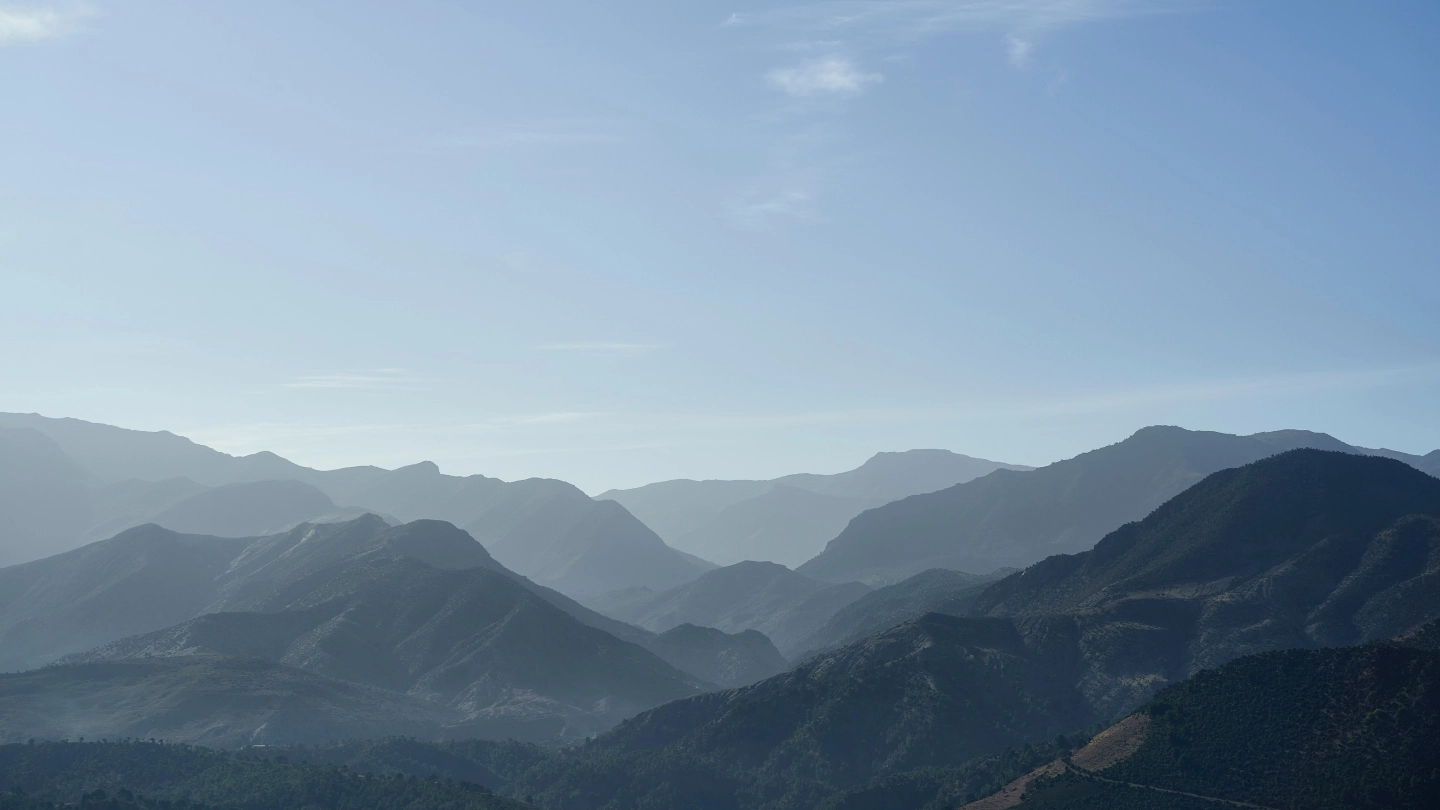
Why Adventure Asia
The company aims to serve soft/medium vacation options to the experienced adventure customer seeking uniquely styled expeditions, rather than traditional tourist-oriented itineraries that are prevalent.
Event Festival
Browse a month-by-month breakdown of suggested itineraries, seasonal activities, climate considerations and festivals.
Ananda Pagoda is probably the finest largest and best preserved of all the Bagan temples. Ananda Temple suffered considerable damage in the earthquakes in history. The Ananda. built by Kyansittha in 1090. is on a larger scale than the Pahtothamya and the Apeyadana and is significantly different in form. The temple is said to represent the endless wisdom of the Buddha.
Symbolizing the limitless wisdom of Buddha. there is a month long sanctified festival for the temple Ananda. the most beautiful one out of 2000 holy monuments in Bagan. Myanmar. It is usually falls on January every year. The busiest day of the festival is on the full-moon day of the lunar month. Villagers and pilgrims around Bagan roll in the sacred site of Ananda for the consecration.
Weather and Climate
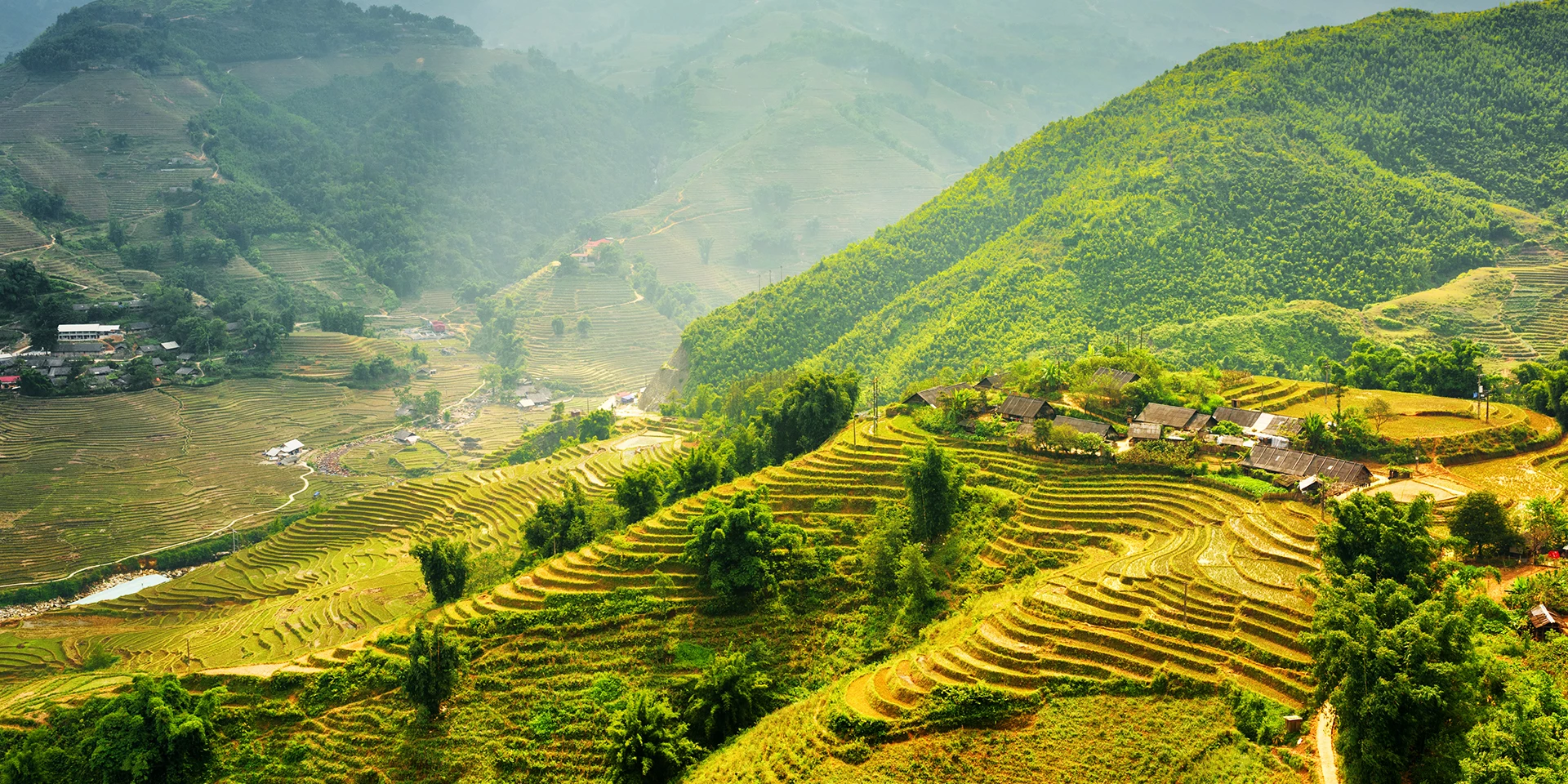
Tropical, generally hot and humid. Cooler in mountain areas.
Coolest months: November-February (average temperatures 15-24 C; in mountainous regions such as Kalaw, Pindaya and the Inle Lake area, as well as in the desert plains near Bagan temperatures can drop to 5 C at night and warm clothes are needed)
Hottest months: March-May (average temperatures 30-45 C)
Monsoon, rainy months: May-September (although in central areas the weather is much drier than on the coast)
Travel FAQs
Essential Information
Myanmar is a hugely diverse country with many different ethnic and language groups. Burmese is the main language, but English is spoken by many people in cities and tourist areas (to varying degrees of proficiency); most hotels and bigger restaurants have some staff with a working level of English. Because of Myanmar’s diversity and its colonial past, most places have two or more names that you might find used in newspapers, on the internet, on maps and in literature – the most prominent being the name of the country itself, which is referred to as both Myanmar and Burma. However, in Myanmar, almost everyone uses the name Myanmar. As with all countries, Myanmar has its own set of unique cultural traditions and idiosyncrasies. Some of these are fascinating; some require sensitivity; some require the visitor to adjust. But above all they combine to make a nation that is as warm and welcoming as any in the world: locals are almost always keen to help out and make friends. Buddhism is at the heart of Myanmar culture and it permeates private and public life. Most young people spend time in monastic education, and monks and nuns hold a revered place in society: they should not be touched; they always sit at the highest place available (for example at a table or on a bus – which sometimes means on the roof); and they hold privileges such as the freedom of first class travel on public transport, sometimes with their own reserved places. In some parts of Myanmar, particularly mountainous border areas such as Chin, Kachin and Karen states, Christian beliefis deeply held – and often mixed with ancient animist traditions (as with the rest of Myanmar). Time spent in Myanmar, particularly travelling out of cities, may see earlier mornings and nights than most westerners are used to. Trains and buses are often scheduled as early as 5am – sometimes as their sole departure time. And due to recent poverty and isolation, as well as regular black-outs, nightlife as a concept is only in its infancy in Myanmar – although the bigger cities, in particular Yangon, have a growing number of bars that are open till late. For more information on going out, go to drinking, bars and nightlife.
Getting There
The country of Myanmar has currently three international gateways. The country’s newest airport stands in the capital Naypyidaw, but it’s right in the middle of nowhere as far as tourists are concerned. Then there’s Mandalay International Airport, which is Myanmar’s biggest, putting travelers closer to the country’s most beloved tourist stops. Yangon International Airport, located far to the south, is older but has better international connections than its northern rival. A fourth international airport, Hanthawaddy, is currently being built in the Bago region and is scheduled to be completed in 2022. As of May 2019, none of these airports’ routes connect to any destinations further than East Asia or the Middle East. From the U.S. or Europe, first-time travelers to Myanmar should schedule a layover at one of Southeast Asia’s international hubs—such as Singapore, Bangkok. If you’re visiting Myanmar, it might make sense to fly in to one, and fly out from the other. Arrange a Myanmar itinerary that starts at Yangon, then meanders through the country to Mandalay. Having different airports at the two ends of your trip ensures you won’t have to double back to any previously-visited point—you can maximizing your travels as you move in one direction (whether it’s northward or southbound).
Getting Around
While in the main cities, one of the best ways to get around is by renting a bicycle. You can find bicycle rentals in almost all guesthouses or activity booking agencies. It’s a great way to get around and is good exercise too! In Bagan in particular, biking from one pagoda to the next is an awesome experience. If biking sounds too tiring for you (which it can be in the intense heat) you can also opt to rent an e-bike which is like a slow version of a scooter. Take note that the price of e-bikes are almost similar to motorcycles. Nevertheless, they are heaps of fun and is a great way to get around Myanmar. Another option to get around Myanmar is by renting a car. Although this isn’t so common, people still do it! This particular option is great for families traveling as you can’t really rent a motorbike that can fit all of you. We’ve seen a few families with children do this so it’s definitely an option. Trains in Myanmar aren’t as enjoyable compared to those in Europe or even Sri Lanka. Speaking from experience, we wouldn’t recommend the long overnight journeys to anyone. Instead, if you really want the whole local experience, try boarding the circular train in Yangon.
Visa and Permits
All travelers to Myanmar require a visa. There are two ways to obtain a Myanmar Visa. Apply for a tourist visa at any Myanmar Embassy or Consulate. Tourist visas are issued for a duration of 28 days at all Myanmar Embassies or Consulates. The EVT Package Tour visas have been abolished. Any tourist whether travelling on a package tour or individually will receive the same type of tourist visa. The compulsory exchange into FECs (Foreign Exchange Certificates) was abolished in 2003. EVT Package Visa exception letters are not required anymore.
Local Customs
Approximately 80 percent of the people in Myanma practice Buddhism. Theravada Buddhism is the most common religious belief and focuses on karma, or the idea that doing good causes more good and doing evil causes more evil. Most Mayanmarese also believe in reincarnation. The country offers freedom of religion, and some of its population follow the Christian, Muslim and Hindu faiths. Typical dress for men in Myanmar is a white shirt with no collar, an overcoat and a longyi, which is a garment made from a long piece of cloth folded and secured at the waist, resembling a sarong. Ladies in Myanmar usually wear dresses, often of silk or cotton, or blouses with a longyi. Both men and women often wear Western tops with the traditional longyi on the bottom. Female visitors should avoid shorts. They also should not wear T-shirts without proper undergarments. Rural Myanmarese often have strong superstitions and might use astrology or clairvoyance when facing important decisions. According to common superstitions, bad luck occurs because of leaving a shoe or slipper upside-down, keeping broken glass in the home or washing the hair soon after a funeral. Some believe that walking under a staircase or a clothesline used to dry women’s longyis can cause an individual to lose will power. Others believe that carrying hairs from an elephant’s tail can ward off evil.
Events and Festivals
January – Ananda Temple Festival Ananda Pagoda is probably the finest largest and best preserved of all the Bagan temples. Ananda Temple suffered considerable damage in the earthquakes in history. The Ananda. built by Kyansittha in 1090. is on a larger scale than the Pahtothamya and the Apeyadana and is significantly different in form. The temple is said to represent the endless wisdom of the Buddha. Symbolizing the limitless wisdom of Buddha. there is a month long sanctified festival for the temple Ananda. the most beautiful one out of 2000 holy monuments in Bagan. Myanmar. It is usually falls on January every year. The busiest day of the festival is on the full-moon day of the lunar month. Villagers and pilgrims around Bagan roll in the sacred site of Ananda for the consecration. This is also the best time to see not only the ritual of Buddhists but the festival is also meant for social gathering. reunification. propagation and perpetuation of the religion that is Buddhism. During the festival. walk around in sea of vendors and shops that sell traditional Myanmar food-staff and enjoy the local atmosphere in locality. February – Mahamuni Festival The festival falls on the full moon day of Thabodwe and, as a rule, lasts for 14 days. Competitions are also held on the pagoda platform for the production of sticky rice (a delicacy in Myanmar). On the full moon day (19 February), a variety of incense sticks are lit in front of the Mahamuni pagoda. During these festivals, thousands of visitors make the pilgrimage to the Mahamuni pagoda. The pagoda is always the centre of activities. On a full moon day it explodes with energy. Evening entertainment like Zats (a variety of dances, song and short theatre performances) and Anyeints. The event lasts for several hours. Comedians also poke fun at current events. The event is broken up by traditional dances and open-air films. During the day, Burmese snacks are sold on small stands. March – Shwedagon Pagoda Festival The festival of the Shwedagon Pagoda is celebrated on the fullmoon day of Tabaung (March) every year. This is the eand mark of Myanmar. vistible from all directions. It situates on the hill of seinguttra and therefore it lore the original name of Seinguttra Ceti. It was built by King Utkalapa enshrinijg the sacred hair relies of the sord Buddha in this life time. brought by the two young trader brothers Tapuss a and Balirea who went to Buddha gaya to trade and came to see the sord Buddha in his early days of Enlightenment. The original stupa was only 66 feet. and now becomes 326 feet after many renovations by successive ruears of Myanmar. The Shwedagon is now the second tallest religious structure in the country whereas the first tallest one in the Shwemawdaw pagoda in Bago having the height of 373 feet. It is the most beautiful and magnificent structure in the world. It is a touring spire of Shimmering gold. It is the world’s richest pagoda. with its geittering crown embeded with inestimable treasure of precious gems and weight of gold beyond enumeration. The whole stupa is not gieted but covered with gold peatesall over. It is one of the madern wonders of the world. Many people in the country contributes funds for tue reparing wover and a great number of people pay homage every day. There are many festivals throughout the year. The pouring water to the sacred Bo-tree. the overnight weaving contest for the yellow robes. the donation of goldleaves in a buck and many others are unnoticed festivals in each occasion. The greatest festival is that of Tabung festival. The renovation works were greatly done and the escalator on the western stairway and the elevators in all others are beautifully firced and the elevators in all others are beautifully firced and the spires are rebuilt. Even the camopy is removated with modern techniques. April – Thingyan Festival Myanmar is a land full of festivals and fun. The Mekong Water Festival includes the countries Thailand. Cambodia. Myanmar and Laos. The celebration is called Songkran in Thailand. Chaul Chnam Thmey in Cambodia. Thingyan in Myanmar and Pimai in Laos. But it is believed that water festival washes away sins and welcomes the New Year. The water festival represents the most popular. raucous and colorful celebration of the year for more than 120 million people who will abandon any thoughts of work and bring their nations to a standstill. People around the country gather together again and visits pagodas. offers and pay homage to the monks. play traditional games and celebrate with their joyous spirit. After playing around and having fun throughout the country. the city-dwellers welcome the New Year on the 17th by cleaning the floors of the pagodas and monasteries. washing old and aged peoples’ hair. helping to cut them their nails. Some offer free food and drinks for everyone who visits the pagodas. some make other donations. If you can be here with us. you will never forget the true joy. May – Sand-Stupa Festival Over the course of one night, stupas are built from sand in three different districts of Mandalay. A stupa consists of five parts which are positioned above one another and supported by bamboo mats and posts. Every district holds its building ceremony on a different date. June – Thi-Ho-Shin Pagoda Festival, Pakokku This pagoda festival takes place from 12 – 17 June. Throughout the event, there is a market and evening entertainment with Zats, Anyeints and movies. July – 19-July- Martyr’s Day) Martyrs’ Day, also known as Arzarni Day, is observed as a public holiday in Myanmar on July 19th. Martyrs’ Day commemorates the assassination of General Aung San and several other cabinet members in 1947. In 1886, Myanmar (then called Burma) came under British control. From the earliest days of colonisation, there was a strong feeling of resentment against the rule of the British. Just before the outbreak of World War II, there had been some moves towards autonomy in 1937, when Burma became a separately administered colony of Britain, with Ba Maw appointed as the first Prime Minister and Premier of Burma. Following the end of World War II, the Panglong Agreement was reached on February 12th 1947, which paved the way for the unification of Burma as an independent state. An interim government was formed with General Aung San (whose daughter is Aung San Suu Kyi) as Prime Minister. On July 19th 1947, gunmen went into a cabinet meeting that was being held at The Secretariat in downtown Yangon and shot dead Aung San and seven other key leaders of the interim government. The assassinations were planned by a political rival, U Saw. Within a few months, U Saw was found guilty and executed. Burma gained its independence from British colonial rule on January 4th 1948. The Secretariat was used as the seat of the first independent Burmese government. August – Taung-Byone (Nats) Festival Of all the festivals, the most important is the one at Taungbyone – one of the most colorful celebrations that we highly recommend you to experience in your trip. Twenty Kilometres north of Mandalay, on the Madaya railway line Taungbyone may also be reached by boat or by road so long as the roads have not been rendered impassable after heavy rains. The celebration takes place before and during the August full moon, in the middle of the month of Waso. Hundreds of Natkadaw, not to mention thousands of pilgrims and the curious who come for a good time, assemble from all parts of the land. All who are married or related to the Taungbyone nats, though not necessarily a professional natkadaw, must come to pay homage or send a representative to act for them. The approach to Taungbyone is punctuated with memorials to the Brothers’ stormy lives. Several alters show the stages of the rape of the virtuous Mei Oo by the younger brother riding on a tiger. The village where the brothers ate their first rabbits is now a place to visit. In Taungbyone itself the place where the boys use to play marbles, the room where they used to meditate and even their bedrooms are now attractions. At the pagoda of Vows, built by Anawrahta as a test of his subjects’ loyalty, 2 bricks are missing by the keystone of one of the porches. The nats’ palace is situated opposite with the pagoda and is the most important nat shrine in Burma. The Taungbyone rites are enacted at 3 different times in the year. The shrine is opened at the end of a December afternoon. On the following day King Anawrahta’s proclamation, originally made after his departure to China in a quest for the fabulous tooth relic of the Lord Buddha, is read. Around February or March, the same performance is repeated to celebrate his return. Having failed to win the tooth the expedition returns with a jade Buddha and fame for the 2 Brothers. On the day after this opening of the shrine, ablutions are performed. These are minor ceremonies when compared to the important six days and nights of the main event in August. Then the first day is devoted to the offerings of devotees in the morning and to the official opening in the afternoon. Some people, having made their offerings, at this point leave the festival to escape the excess of the following days. At the opening of the shrine doors, a great crowd rushes forward, many with coconuts held aloft, trying to reach first the after of the two brothers. The crowd swells, tense with excitement; there are ribald singing and bawdy heckling. Alcohol is passed about and drunk as the rabbits are grilled. It is offered to the nats behind the altar in the hall of mirrors where the dancers get dressed. Ferns have particular importance in this festival. Once in contact with the nats, they will protect the vital irrigation channels. The man will make a crown of them for themselves and take it back to their fields. September – Manuha Pagoda Festival On the first day of the festival, the parades of beautiful girls with trays of fruit, sweets to offer to the temple. In the afternoon, the young men parades in the streets with the effigies of the heroes, gods, and the animals. At night, people will dance and sing together. And the next morning, they offer food to the Buddha and the monks in the pagoda. Farmers from nearby areas get to the Myinkaba village to go deep into the festival by ox-drawn carts with their products. They will sell these products, and use the amount of profits to donate the Manuha Pagoda. October – Phanungdaw Oo Pagoda Festival The Phaung Daw Oo pagoda is the most highly revered monastery in the Inle Lake area. It houses five ancient images of the Buddha that are completely covered in golf leaf. The pagoda is easily reached by boat from Inle Lake; in front of the building is a landing pier. At the center of the monastery building is a golden stupa topped with an ornamental hti. The interior walls of the temple are decorated with murals depicting Buddhist stories. 800 Year old golden images At the center is an ornate shrine with a pedestal, on which the five more than 800 years old images of the Buddha are kept. So much gold leaf has been applied to the images, that they have become unrecognizable as Buddha images and look like a solid mass of gold. Every day Buddhist devotees come to the monastery to pay their respect to the images and apply more gold leaf, which only men are allowed to do. The images are believed to have been brought to the Inle Lake region by Alaungsithu, King of the Bagan empire in the 12th century. The King was a devout Buddhist, who travelled extensively around his empire and had many Buddhist monuments built across his Kingdom, the most impressive one being the Thatbyinnyu temple in Bagan. Near the pagoda is the boat shelter where the Karaweik boat is stored that carries four out of the five images in procession across the lake during the Phaung Daw Oo Pagoda festival. At the front of the boat is the large gilded head of a Karaweik bird; at the back the gilded tail of the mythological bird. The four images of the Buddha are kept in an ornate pavilion topped with three multi tiered Burmese style Pyatthat roofs in the center of the boat. The Phaung Daw Oo pagoda festival is held during the Burmese month of Thadingyut, the 7th month of the Burmese lunar calender (October/November). The 18 day festival is the most important festival in the Shan state. In a procession of boats four of the five images of the Buddha are removed from their shrine in the Phaung Daw Oo pagoda and placed on the Royal Karaweik barge. The barge is towed by long boats manned by up to a hundred leg rowers in colorful costumes. The Royal barge stops at 14 villages around Inle lake, where the images stay in the main monastery for one night. Until the mid 1960’s all five images of the Buddha were carried around the lake on the Karaweik barge. In 1965 one of the images got lost when the boat carrying them capsized and the images fell into the lake. People dived into the water and managed to recover four of them, but the 5th remained lost. Finally they gave up their search and returned to the Phaung Daw Oo pagoda. Back in the pagoda, they found the lost image miraculously back in its shrine. Since then, only four of the images are carried around the lake, the 5th one remaining in the pagoda. Another highlight of the festival are the long boat races, the rowers standing upright and rowing with an oar attached to one leg. November – Fire Balloon Festival The capital of the Shan State is a little away from the popular tourist destinations of Myanmar. However, close to the end of the Buddhist Lent in November the mountain city attracts dozens of teams from all over the country who come to launch balloons. An exciting competition takes place at a specially designated area in the centre of Taunggyi. The festival, that annually attracts more than 20,000 spectators, marks the end of the rainy season. By launching thousands of balloons the Burmese people ward off evil spirits—it’s a mix of Buddhist and Hindu traditions. The balloons are nothing more than enlarged copies of Chinese sky lanterns. These fragile paper structures have the form of animals, birds, and mythological characters propelled by the burner in their lower part. The first three days of the competition take place only in the daytime, and the participants are mostly families with children. On the last day, after sunset a torchlight procession goes to the festival field through the central streets of Taunggyi. The culmination of the festival is the launch of giant balloons decorated with patterns of burning candles. The finals are followed by fireworks. The Balloon Festival in Taunggyi is a colourful and exciting spectacle that allows one to immerse in the culture of Myanmar and get acquainted with its traditions and history. December – Christmas Day The Christmas celebration is always a communal one for our parish which is located in the northern part of Myanmar (Burma) near our border with China. It is a time of celebration as a family, as a local community and as a parish community at large. Christmas is always associated with colder weather (though not extreme). Christmas caroling begins on the first day of December. Lots of prayer gatherings are held in different households and gift-giving especially to the children. These are times to reach out to people living in more remote areas of our parish who cannot go to the parish church due to their isolation. There was one memorable Christmas celebration held in a far remote area of the parish in conjunction with the silver jubilee celebration of a catechist. He was the leaders of a community of about ten Catholic families in his village and nearby areas as well. To reach the site of the celebrations, we had to travel a half day by boat down the river and an entire day crossing many fields and marching through the jungle. About 50 youth volunteers from different parts of our parish which covers several towns and villages, went to the site of the celebration months ahead to set up everything for the occasion since there were few Catholic families living there. The site was located right beside a small creek. They chose this site for practical reasons because the small creek would provide water for drinking, cooking and bathing.Practically everything needed for the occasion had to be transported from the city and set up by the volunteers led by a lay leader from our parish and two senior seminarians. They built several large and smaller bamboo shelters to host all the people. To lessen the work of the organizing committee, all the visitors were given raw food and each did their own cooking. All had great fun trying to do ordinary things under fairly extraordinary circumstances.
What will it cost for a…?
Street food snack = 500-1000 MMK Bottle of beer in a bar or restaurant = 2000-2500 MMK Banquet in a small, locally-run restaurant = 3000-5000 MMK Dinner in a high-end hotel restaurant = 15,000+ MMK
Are credit cards accepted widely in Myanmar?
Some hotels, restaurants and shops accept credit cards but Myanmar is largely a cash economy. It’s best to carry cash for purchases.
What is ATM access like in Myanmar?
ATMs are widely available in larger cities, though they can be unreliable. It is not uncommon for ATMs to run out of funds or not work due to power cuts. You may need to try several ATMs before having success withdrawing funds. It’s advisable to still bring US dollars to exchange.
Is Myanmar a safe destination for LGBTQAI+ traveler ?
Discretion is advised for LGBTQI-travellers visiting Myanmar. Though most local are tolerant, homosexuality is a cultural taboo and gay and transgendered people are rarely out. Public displays of affection are frowned upon, regardless of sexual orientation. Travellers should be aware that, although it is almost never enforced, same-sex intercourse is legally punishable with up to 10 years in prison in Myanmar. For more detailed and up-to-date advice, we recommend visiting Equaldex or ILGA before you travel.
What's your refund policy?
Below is our cancellation and refund policy: 🔸 60 days prior to arrival date: No cancellation charge for the land cost. We guarantee 100% of the land cost back. The airline cancellation fees are applied according to the airline's policy. 🔸 59 - 30 days prior to arrival date: 5% cancellation charge + airfare cancellation fees 🔸 29 - 15 days prior to arrival date: 10% + airfare cancellation fees. 🔸 14 - 8 days prior to arrival date: 40 + airfare cancellation fees. 🔸 7 days prior to arrival date: 100% 🔸 No show: 100% Please note that the domestic flight tickets in the package are non-refundable





















